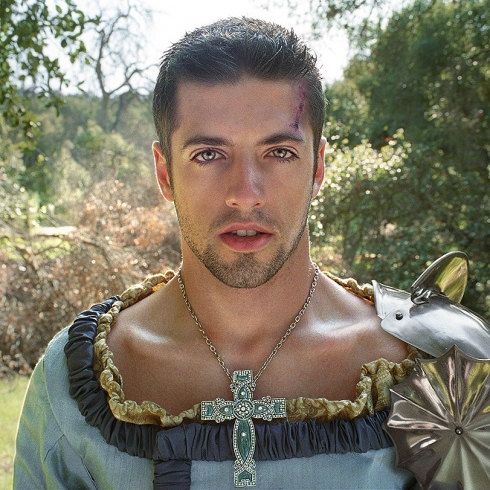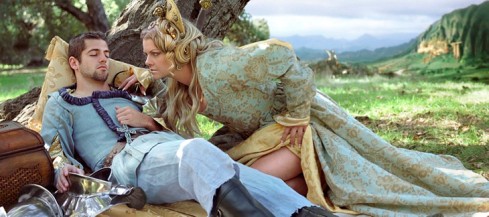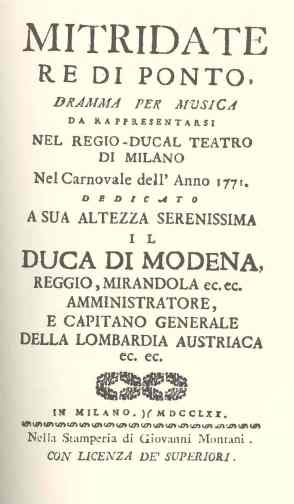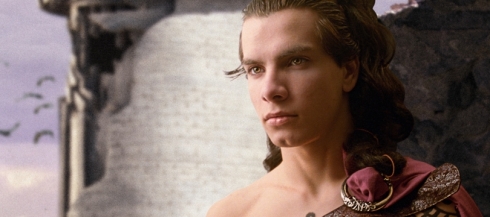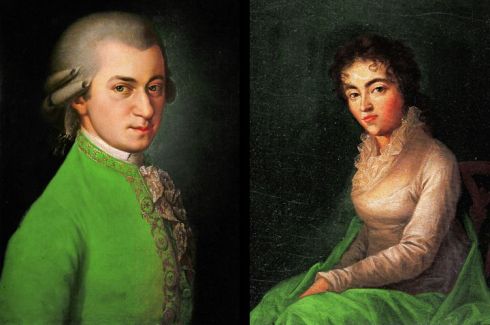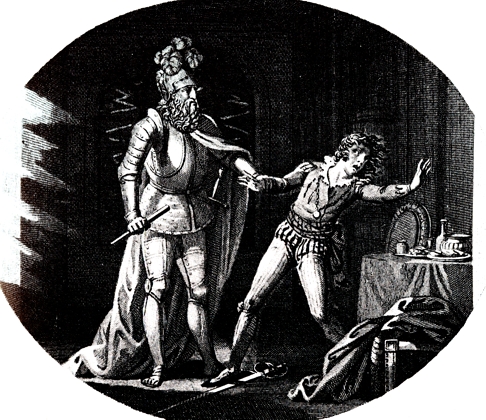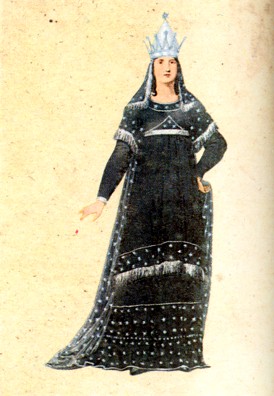When we think of opera, the first image that is usually conjured is one of enormously large, middle aged people yelling at each other. Sometimes with horned helmets. Is this an accurate depiction of opera?
Well, sadly, in the 1970s and 80s, the answer to that would have been “yes”. During this time, the enormously popular, and enormously talented, opera singers Lucianno Pavarotti and Montserrat Caballe rose to power. You could find them on nearly any recording of any opera you cared to name. And, yes, both singers looked middle aged from the day they were born, and both were heavy set. And yes, these famous and popular singers were pretending to be teenagers falling in love, sexy temptresses , dashing heroes, and hardly anything at all like what they looked like in real life. (There were also other great singers who never looked quite right as teenagers, Joan Sutherland, Beverly Sills, Placido Domingo, etc.)
Every great album from this time features these plump, average-looking singers on the cover. Because this image of the opera singer is so recent, this is the one we are stuck with.
Great opera singers are fat and loud.
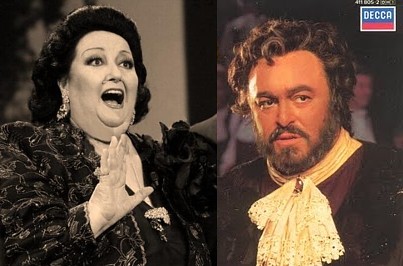
Two of the world's greatest opera stars, Caballe and Pavarotti, who never quite looked dramatically appropriate, but whose vocal talents are unrivaled.
Originally, however, any opera that was written, was written for an age appropriate and dramatically appropriate cast. Mozart’s “Don Giovanni” was written for a lively bunch of twenty year olds, Handel’s “Giulio Cesare” was written for an entirely age appropriate cast across the board. So why in the 70’s and 80’s could you find a 50 year old Don Giovanni, instead of a 21 year old Don Giovanni? When did Cleopatra become a fat 40 year old?
Well, part of it has to do with the fact that these famous singers had such amazing and unique voices, that the audience didn’t care so much what they looked like as long as they got to hear the amazing voices singing amazing music. This, of course, completely negates dramatic truth. No matter how convincing Montseratt Caballe’s performance was, no matter how nuanced her voice, it never completely worked dramatically.
Recently, on another blog, the author states that many people don’t like opera because the plots of opera are too “silly”. I disagree. That is not a valid excuse to not like opera. Consider the most popular blockbuster of the past few summers. It is about valiant alien-robot-cars defending Earth from the machinations of villainous-evil-alien-robot-cars.
People love it. People take it very seriously. How can opera — which on its weirdest day (Tales of Hoffmann) could have never touched on anything nearly as silly as Transformers –be considered the more silly of the two?
The answer lies in the fact that operas can be staged without dramatic or emotional truth by artsy or incompetent actors and directors. Thus the operas lose their inherent value – their dramatic and emotional value. Drama cannot be successful without dramatic and emotional truth, and most modern opera productions do their damned dirty best to spoil it.
Mozart set in a whore house with nudity, urination, and rape? I don’t remember reading that play. Mozart featuring a mermaid singing on a swing while people wander around aimlessly? Missed that opera. Mozart featuring the beheading of Neptune, Christ, Buddha and Mohammed? Something is clearly amiss, and not just because at least three of those people hadn’t been born when Idomeneo takes place.
Can anyone imagine “Gone with the Wind” starring 50 year olds, dressed as mermaids, killing Buddha in a whorehouse with a giant half-letter “E”? No? Well that’s because the idea is stupid. But when the copyright expires, all taste and common sense seem to go out the window. (By the way, click on the links in the phrases above if you have a good tolerance for bad taste.)
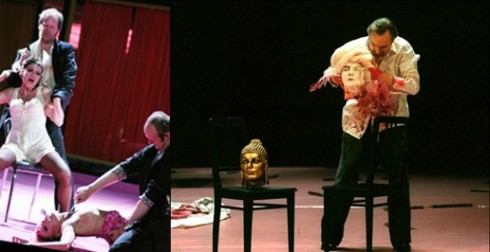
Pictures from two of the worst Mozart Productions ever to grace the stage. The vulgar and violent Seraglio set in a whore house, and the basically unexplainable murder of world deities in a head-scratching, eye-rolling, Idomeneo production.
So, if you’re new to opera in the 2000s, instead of the fat, middle-aged singers, in fairly appropriate, emotionally truthful productions of the 1970s-80s, you’re now faced with mermaids holding giant Sesame Street letters, killing off religious leaders. That’s to say, now both dramatic and emotional truth have been thrown out the window at the whim of the egoist directors, and opera, to say the least, has become extremely confusing (Or just plain bad).
Rest assured, however, that in the beginning, operas were straightforward plays – the most popular form of entertainment; The Hollywood of the day. Some operas were good, some bad, but all tried to achieve their own internal emotional and dramatic truth — just like our movies do today.
That’s why opera is better represented on recording than in the theaters these days. Stripped down to only the text and the music, we are allowed to experience the opera on and intimate and personal level.
It’s a sad truth, but also a welcome one, that recordings today are better than most productions. Recordings allow us to experience numerous different interpretations and utilize our own imaginations while experiencing the play. This process becomes more like reading a book than like experiencing a drama, however, and it takes time, which, I’m afraid is another reason people stay away from opera.
Climbing the mountain to enjoying opera:
1. Break the Language Barrier
Most operas come with books that feature translations to the original text in many different languages, meaning that you can, if you like, read along to find out what’s going on. However, a casual music listener will insist that they can’t truly enjoy the music if they don’t know what is being said just through listening.
Modern music listeners know the importance of understanding lyrics more than anyone, since how could anyone enjoy “Bad Romance” without a full comprehension of the lyrics “Ga ga, ooh, la la, rah rah, I need your bad romance” or the deep pathos behind the lyrics “Baby you’re a firework, Come on let your colors burst, Make ’em go “Oh, oh, oh!”
I am being satirical here, simply because that’s the best way to show that good music, and popular music, does not need a coherent and well reasoned set of lyrics to move and entertain us. You don’t need to know what they’re saying to enjoy a song, however, you do in order to understand a drama, and the time it takes to comprehend that drama is the real reason modern music fans avoid opera.

The only thing missing is music. Transformers has more in common with opera than nearly any modern musical. For proof, take a look into Rinaldo (Handel), Idomeneo (Mozart), and Giustino (Vivaldi). Maybe the giant, explosion-inducing Monsters that take up entire quarters-of-an-hour of stage time will convince you...
2. Take the Time to Do it Well
Not everybody can read at the same rate. Not everybody has a full comprehension of what they’re reading. Now add to that an opera which will take around 3 hours to experience, and you have an instance where you have to have a desire to read an opera before you’re going to do it. The only way that desire will strike you, though, is if you have already experienced an opera. It’s like a Catch-22.
If you have any desire to know what’s going on in the music, you can’t be a casual opera listener.
3. Focus on Your Goal
“I can’t listen to things and read at the same time!”
Opera, in order to have a full effect over your senses, has to be experienced without constant interruption. It involves reading a text, interpreting that text in your imagination, and listening to what the composer and the singers are trying to convey.
This is the type of focus a person has to devote to reading a book, but with an extra sense thrown in. People who aren’t likely to read a book, are even less likely to listen to an opera.
4. Find the Music you like in Opera’s Enormous History
Another issue is that opera has been around for so long.
Imagine how popular music has changed. From to Sinatra, to the Beatles to Bob Dylan. From Queen to NSync to Lady Gaga. That’s only around 60 years, and the music is so diverse, and so different, that any fan of one can be an ardent detractor of the other.
Now add centuries of music on top of that, and you’ve got the changes that opera runs. There is so much music to choose from that a person will not know where to start.
When a person says, “I like Opera”, the layman thinks, “That’s a specific type of music”, while the initiated person thinks, “What type of opera?”
Personally, I like operas before 1800. I listen mainly to music from 1700-1800. That’s what I like. When I meet a person who likes opera, they generally listen to music from 1850-1910, music which I sometime like, but which I am not particularly passionate about. The conversation ends there.
Let’s take Popular Music as an example. It’s basically the difference between Jazz and Rock-and-Roll. If I am intimately acquainted with Jazz, which is one type of popular music, I am not necessarily passionate about Rock-and-Roll, though I may like some of it.
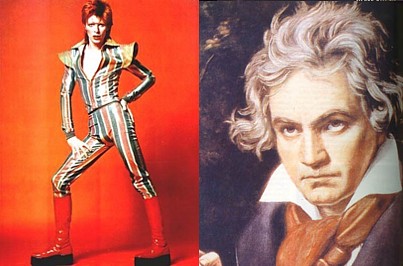
Bowie and Beethoven. One of these things is not like the other, though, strangely, some people seem to have a hard time being able to tell.
But people tend to assume that “Opera” is a specific category, like “Norwegian Death Metal” or “Electronic House Music”, when in fact, it’s just as broad of a label as “Pop Music” or “Classical Music”, and may even be closer to broadness as the label “Music” in general.
5. Defeat the Snobbery
“You only listen to music from 1700? You’re a snob!”
This seems to be the prevalent attitude. If you don’t just gush over popular music, you’re the snob. Never mind that you’ve actually listened to the newest pop song, and your accuser is the person who has never, and may never, listen to any opera of any sort in their entire life-time.
How can a person not like 400 years worth of music?
The opera fan faces a constant barrage of snobbery, simply because they like something that is different, uncommon, and hard to explain. I find myself time and again trying to defend my musical tastes, rather than just enjoying the music. Sure, it’s a different style of music. Sure, you may have never heard anything like it before. But that doesn’t mean I have to explain myself. It feels like being in middle-school when you liked something that wasn’t the “popular” thing to like and being made fun of because of it.
You remember what Middle School was like: “You like the Backstreet Boys? The most popular musical group of the decade? That’s gay, and you’re stupid.” (Backstreet Boys is just the example. You can fill it in with anything you care to name — Middle Schoolers hate everything. For me it was Power Rangers.)
Sadly, it also works the other way around, too.
If you ever have a simple question about a lesser known opera, and you come across an opera fan who, instead of answering your question, derisively says, “Are you saying the Neue Mozart Ausgabe” is incomplete?” You should take a moment to consider, and then back away very slowly… This is not a normal person. There is no way to deal with this person in a normal manner. I learned the hard way that some opera fans don’t like people who don’t already know everything there is to know about opera… and that, perhaps, yes,the Neue Mozart Ausgabe may, indeed, be incomplete. (It’s basically a document containing everything Mozart ever wrote, or that pertained to his music.)
Some fans of opera become snobs because they have an “inside knowledge” of something. Much like this hilarious “hipster” Mozart:
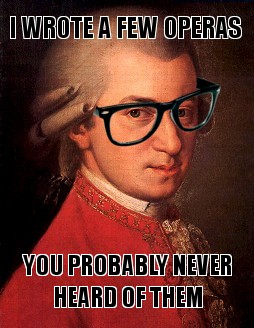
Hipster Mozart reminds me of all those times I've had to explain my project to my models.
Deus Ex Machina
There is a happy ending to all of this.
There’s a popular European Revival of interest in bringing opera to life in the manner the composer and author intended. Talented conductors and singers are bringing neglected works, and popular works, back to life by remaining true to the opera’s original intentions.
Their medium of choice, of course, is recording, rather than theater.
Rene Jacobs reminds us why we love Mozart, by giving it back its emotional and dramatic truth, as well as adding a dash of theatricality. Cecilia Bartoli and Philippe Jaroussky respect and revere music, unearthing forgotten gems and presenting them on recording for the first time. Alan Curtis attempts to record all of Handel with age appropriate, talented actor/singers to bring the composer’s operas back to the top of their game, where they belong.
As more and more young people start directing the course of opera music, it gains a freshness and vitality that the older generation has lost touch with. This upholds the age-old adage, if you haven’t seen it before, it’s new to you!
However, you’ll probably always find the egoist director trying his hardest to get his all-nude Vivaldi opera to ruin the experience. But luckily, there will always be the Autobots of opera to fight those evil Decepticons!
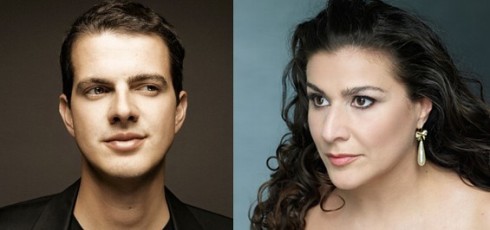
Jaroussky and Bartoli, the Auto-bots of Opera. Ever ready to fight the evil Dececpticons of Opera.
Autobts, Roll out!
In conclusion, I say to you, be brave. Listen to opera. There’s a whole world out there you may be missing!
Tags: Bartoli, Essay, Jaroussky, Mozart, Opera, Transformers
